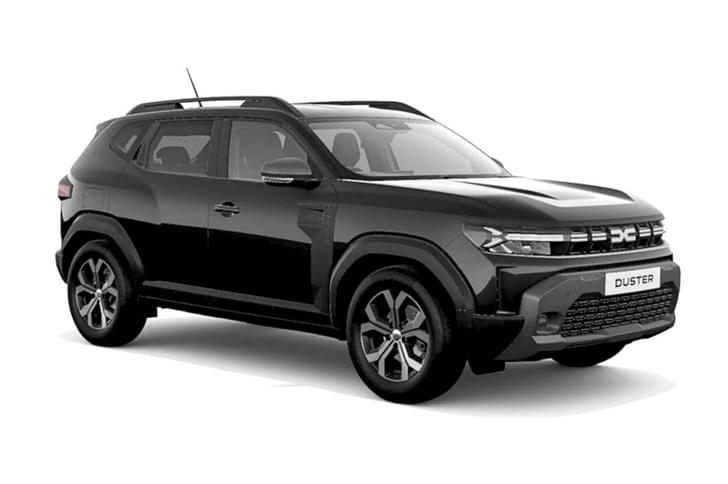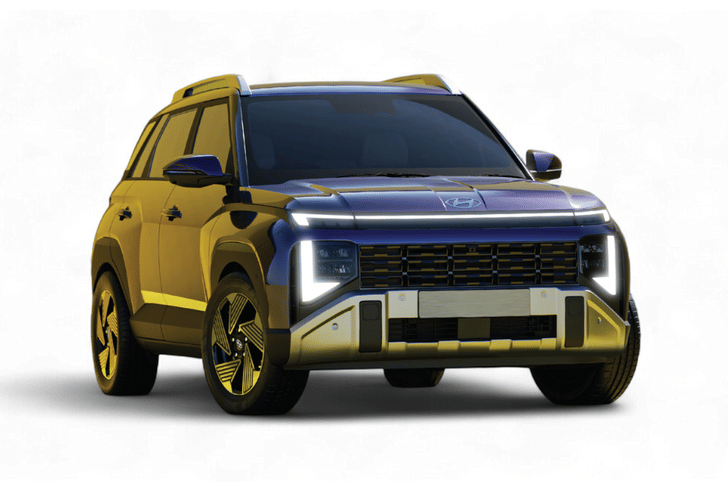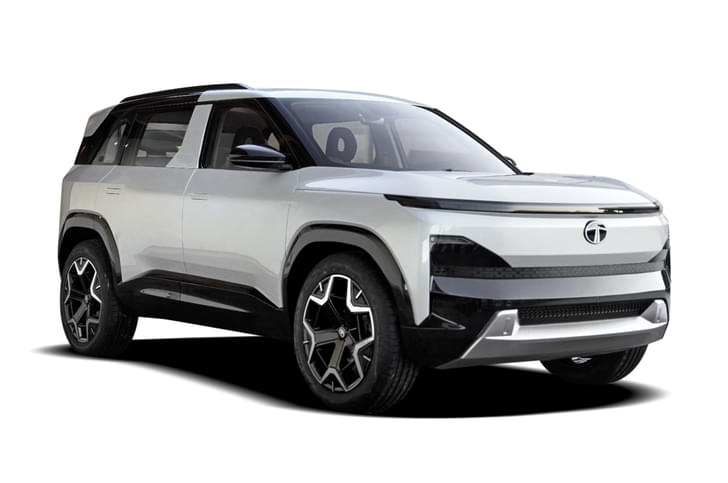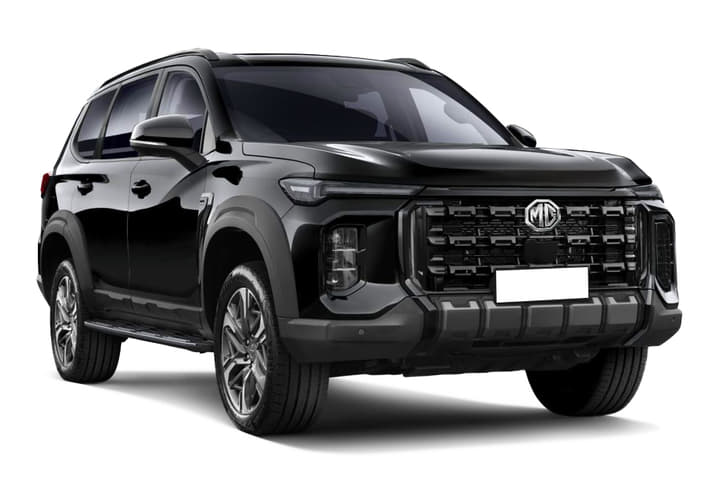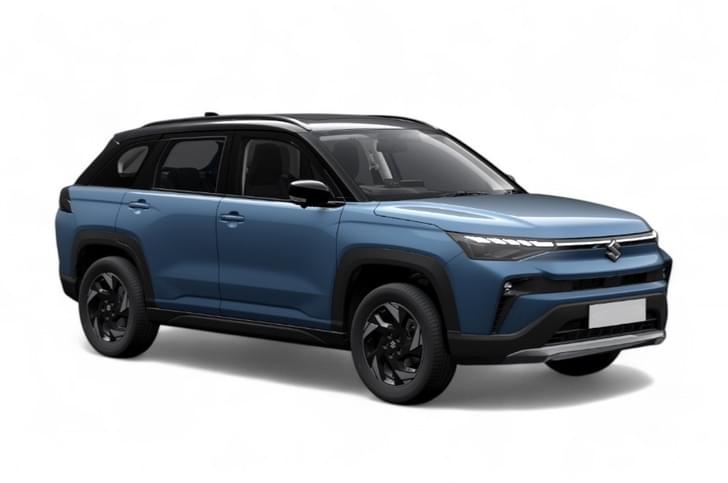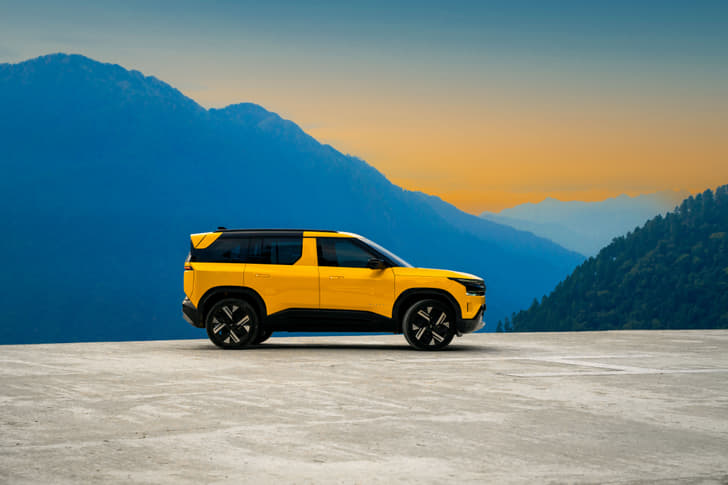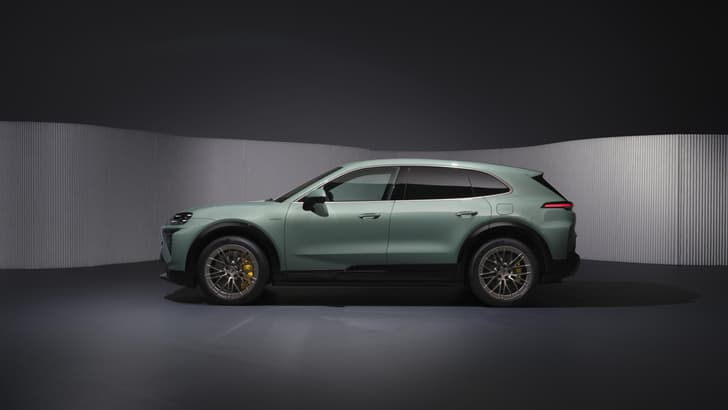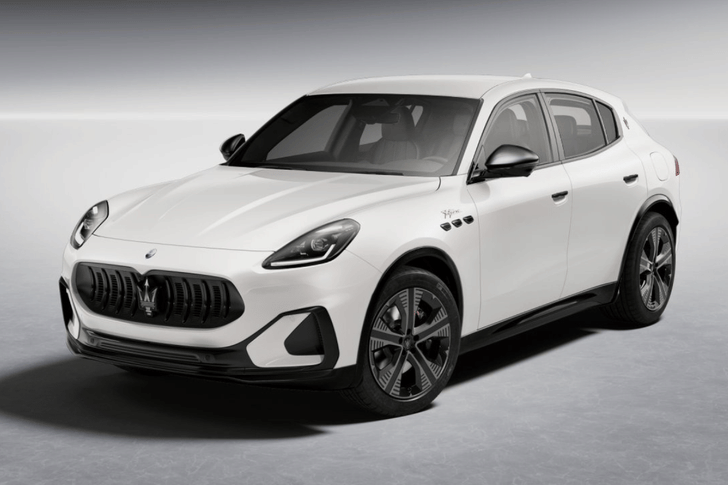The Skoda-led ‘India 2.0’ strategy of the VW Group is squarely aimed at increasing market share in India, and the first offering delegated to drive sales is the Skoda Kushaq, a midsized SUV that competes with formidable rivals like the mighty Hyundai Creta and Kia Seltos. In its pursuit to achieve sales volumes, the Kushaq is tailor-made to meet the taste and preferences of India buyers – its packaging has been stretched out to maximize cabin space, it is equipped with features in vogue, and the company has priced it between Rs 10.50 and Rs 17.60 lakh (ex-showroom, India), catering to a wide set of buyers. The petrol-only Kushaq made a positive first impression when we drove it some months ago, and now we put all the four variants of the Skoda Kushaq through our exhaustive tests to find out how they perform in the real world.
The Skoda Kushaq is underpinned by the MQB A0 IN platform; the ‘IN’ represents an India-specific version that has been localised to the tune of 95 percent to keep costs in check. What’s more is that this platform has been stretched out, boasting of a segment-best 2,651mm wheelbase, in order to maximise interior room (more on that later).
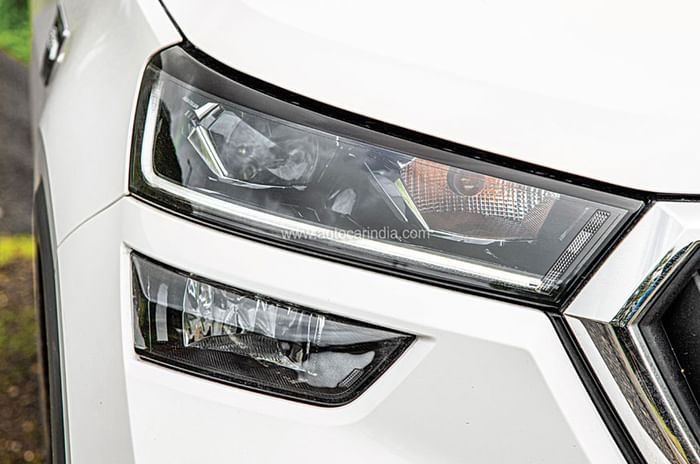
Viewed in light of the competition, the Kushaq is the smallest in every other dimension, hence it lacks the road presence of a hulking SUV. But its compact size and chic persona will find appeal among folk seeking a crossover that isn’t overtly brawny and intimidating.
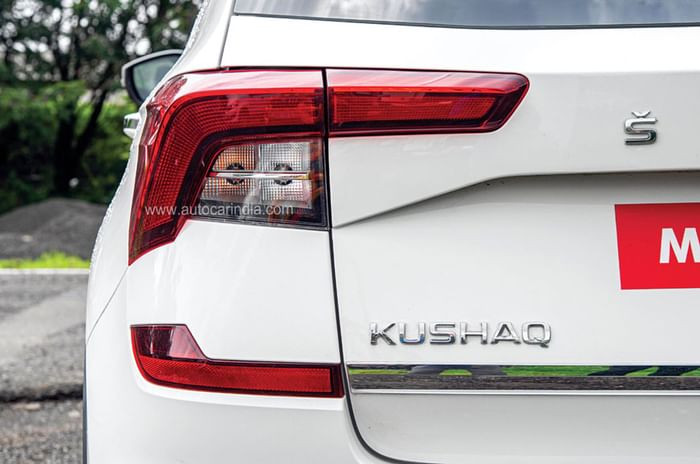
Thankfully, Skoda designers have remained true to their DNA and the Kushaq boasts of a neat and clean styling philosophy, with plenty of tasteful elements. The LED headlamps feature attractive crystalline elements and the chrome-rimmed butterfly grille is unmistakably a signature Skoda design trait. The 17-inch alloys look stylish and also present are confident character lines that add definition to the side profile. What’s interesting is that the side profile is identical to the Volkswagen Taigun, and both cars share their body cladding, fenders, doors, roof rails, mirrors, etc. The tail-lights feature eye-catching crystalline design elements, and these are reminiscent of those of its elder siblings, the Karoq and Kodiaq.
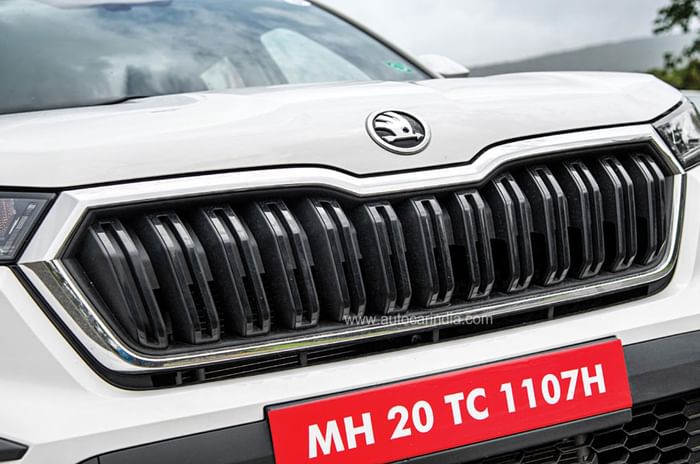
The solid ‘thud’ sounds on shutting its doors reaffirms the fact that this localised car still boasts of a solid European build. The Kushaq’s dashboard sports a clean design with horizontal lines, and adding spice to the cabin are some interesting 3D elements. The hexagonal chrome-lined vents pop out nicely, while the multi-layered and multi-textured strip that runs across the dash lends some depth. The light colours used inside and the large glass area further enhance the sense of space and roominess of the cabin. And what’s particularly stylish is the two-spoke steering wheel, with its floating hub and neat chrome roller controls. It feels nice and chunky to grip and is similar to what you get in the latest international Skodas. The instrument panel, with its analogue dials flanking a low-resolution, black and white information screen, looks quite dated in an otherwise modern cabin.
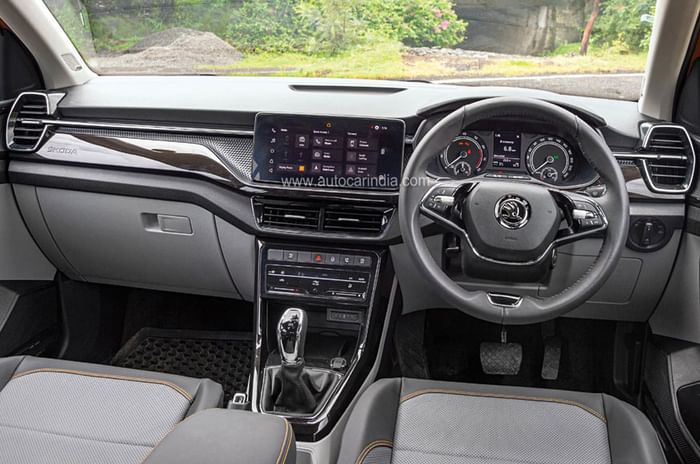
Interestingly, it won’t take much of poking around the cabin to identify where Skoda has cut costs. While the dashboard top looks reasonably premium, the rest of the plastics are neither soft-touch nor textured, and while they feel long-lasting, they don’t feel special enough in a car of this segment. Details like the air vents and grab handles, which aren’t damped, feel flimsy to operate, the woven roof liner looks downmarket, there’s no shroud to hide the sunroof mechanism when you pull back the blind, and the leatherette seat fabric that’s finished in grey with yellow piping isn’t evenly stitched. What’s missing in this cabin is Skoda’s legendary quality and attention to detail, which have raised expectations from the brand.

The seats are well designed with the right level of firmness, and comfort is of a high order in the spacious cabin. With plenty of adjustments for the seats and steering, tall glass area all around, and high-set seats, finding the perfect driving position is a breeze and visibility is excellent too.
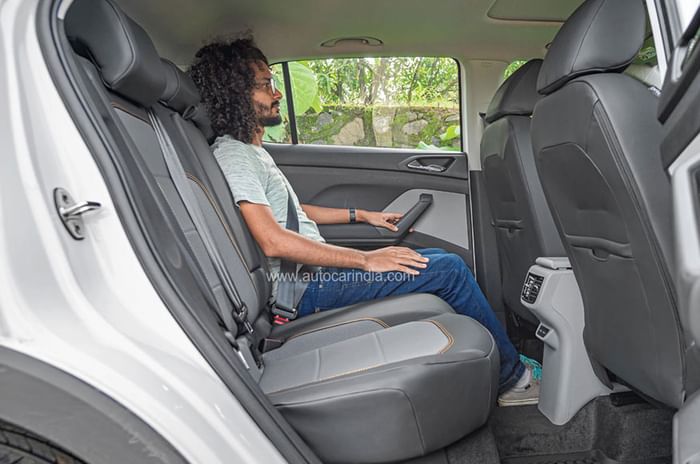
The cabin is thoughtfully designed with a generous amount of stowage space. The plus-size glovebox and the large door pockets hold a fair amount. In addition, there’s an elbow box, a pair of cupholders, and a wide rubberised tray with a wireless charging pad.
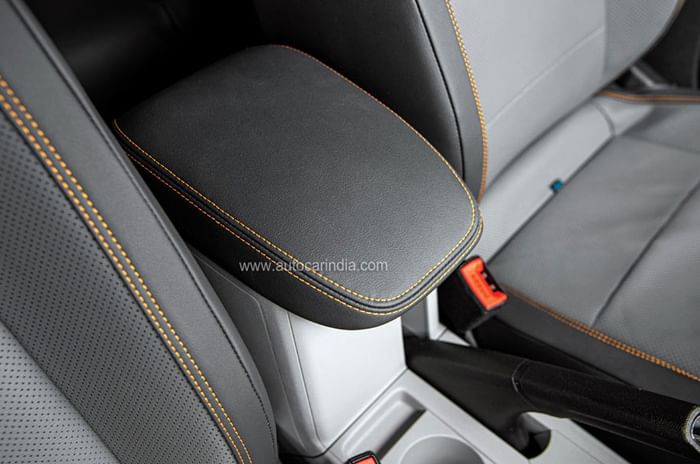
As mentioned earlier, the Kushaq boasts of the longest wheelbase in its class, and as a result, space in the rear is aplenty. Six-footers will have no problem stretching out, and headroom won’t be a problem either, as the roof is smartly scooped out. The perfectly angled backrest and ample under-thigh support further enhance comfort, especially on long drives. Skoda has minimised the floor hump’s height for the comfort of the middle passenger, and hasn’t skimped on safety either. Even the middle occupant gets an adjustable head restraint, as well as a proper three-point seatbelt. The Kushaq, however, is not particularly wide, so accommodating three adults at the rear will be a tight squeeze. For the convenience of rear occupants there are large door bins, seatback pockets, clever smartphone pockets, rear air-con vents, as well as a pair of USB-C charging ports.

On paper, the 385-litre boot is much smaller than its rivals, but because it is well shaped, it can easily gobble up a lot more cargo than its size suggests. Further, the seats split 60:40, and with the rear bench folded, cargo volume goes up to a cavernous 1,405 litres. Also present here are some ‘simply clever’ bits like nets and hooks, which are useful for fastening your luggage.

Skoda has packed in many features that buyers in this segment are looking for such as a large, 10-inch touchscreen infotainment system with segment-first wireless Android Auto and Apple CarPlay. This system also includes in-built applications like Gaana and Audiobooks, among others, which work using your smartphone’s internet (via Wi-Fi hotspot). A voice command function linked to these apps would have certainly enhanced their usability. For example, in its current state, you’ll struggle to search for songs on the Gaana app using the tiny keypad, especially while on the move.
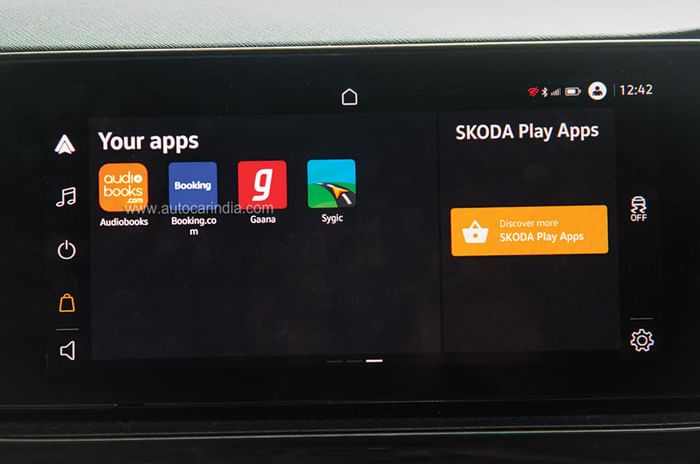
The Kushaq also features a touch panel for the climate control settings, which not only looks premium, it’s also as intuitive and as easy to use as regular knobs and buttons. In addition to these, it gets automatic LED headlamps and rain-sensing wipers, cruise control, a sunroof, wireless phone charging, rear air-con vents, reversing camera and an auto dimming inside mirror. There are ventilated front seats to speak of as well. Curiously, the ventilated seats offer only two fan speeds, rather than three (available in rivals), and the button has orange LEDs (usually associated with heated seats), instead of blue.
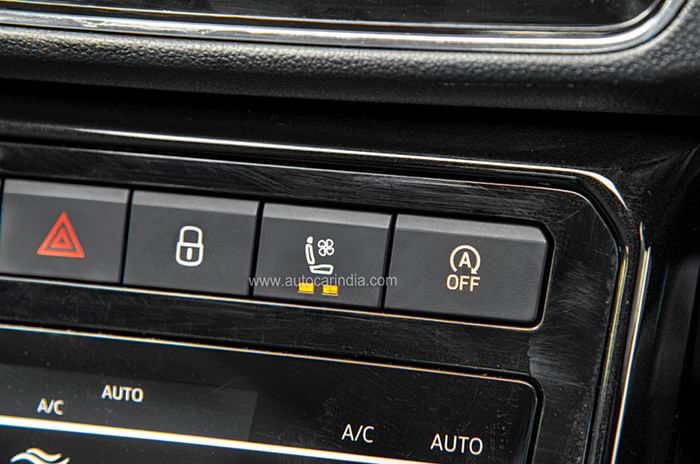
In terms of safety, all variants get ESP, traction control, multi-collision braking, brake disc wiping, alongside ABS with EBD and dual airbags. Some higher variants get hill-start assist, and only the manual top variants get side and curtain airbags.
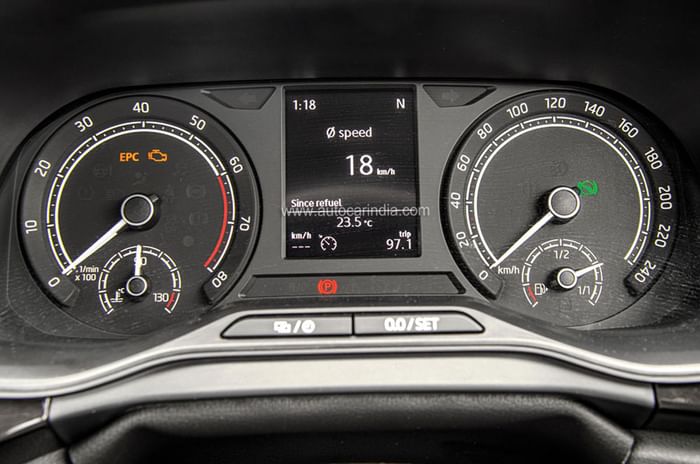
The competition offers kit like rear disc brakes, 360-degree parking camera, panoramic sunroof, powered driver’s seat, e-SIM based connected car tech, digital instrument cluster and some even get a head-up display, all of which are missing on the Kushaq.
While we’ve experienced the 1.0-litre TSI engine in the Skoda Rapid before, in the Kushaq, this engine churns out 115hp and 178Nm, which is 5hp and 3Nm more. Does that result in even stronger performance than its sedan sibling? Being nearly a hundred kilograms heavier than the Rapid, the 1.0-litre TSI doesn’t feel quite as energetic in the Kushaq. There’s adequate performance on tap, as long as the engine is spinning over 1,800rpm, and power delivery is smooth and uninterrupted. This direct injection motor serves peak torque over a broad 2,750rpm band, from 1,750-4,500rpm, so overtaking or closing gaps in traffic is quite easy. Flat-out, it will sprint to 100kph in just 11.47sec, which is very quick, but the gearing could have been a touch shorter for better driveability in the lower gears. The gap between the second and third gear ratio is unusually wide, and during a spirited drive, you’ll often find yourself downshifting to second, rather than staying in third, to make quick progress. As a gearbox, the MQ200 6-speed manual is smooth in its operation, with well-defined gates, but the shifts aren’t quite as smooth as its Korean rivals.
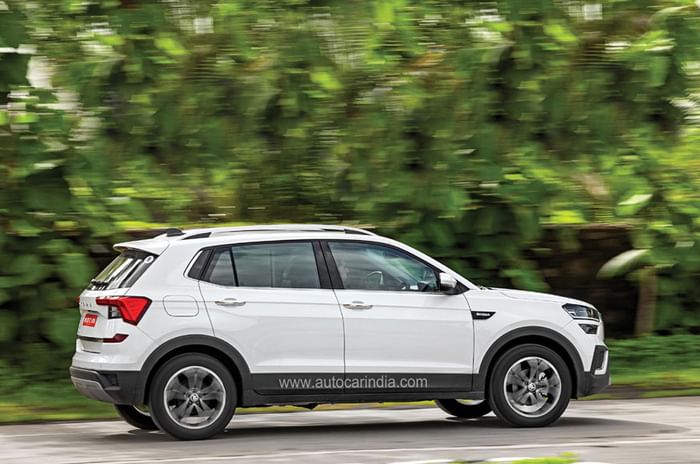
The AQ250 6-speed torque converter paired to the 1.0-litre TSI is an all-new fourth-generation Aisin transmission, making its global debut in the Kushaq. This automatic gearbox is smooth for the most part and works well with this engine. Skoda has intentionally kept the engine idling speed rather high, to prevent it from stalling. As a result, it leaps forward from a standstill rather aggressively, so you need to carefully modulate the brakes to control this behaviour. After the initial lurch, the transmission is programmed to shift to the highest possible ratio at the earliest, in the interest of fuel efficiency, and as a result you’ll need more aggressive throttle inputs than usual to close gaps in traffic. Flat-out acceleration is rather lazy and it sprints from 0-100kph in 13.16sec. To extract the best out of this engine, the automatic gets a ‘Sport’ mode that negates the sluggish engine behaviour by holding gears longer than when in ‘D’. There are paddle shifters, as well as a tiptronic mode, for manual control over the transmission. Downshifts, however, aren’t particularly smooth and the transition from third to second or second to first gear can get quite jerky at times.
The pick of the range is undeniably the EA211 EVO 1.5-litre TSI, four-cylinder, turbo-petrol engine. It feels strong right from the get-go and is eager to make an impression. Unlike its small-capacity sibling, there isn’t any perceptible delay before the turbo starts singing, and from almost idling RPMs, this motor feels energetic. A thick wave of torque is delivered in a clean, uninterrupted serving, and this motor keeps pulling strongly all the way till 6,500rpm in the lower gears. The MQ281 6-speed manual gearbox requires a firm shove to slot into the gates and even the clutch is on the heavier side. So, this isn’t the ideal version for someone whose daily commute involves bumper-to-bumper traffic crawls.
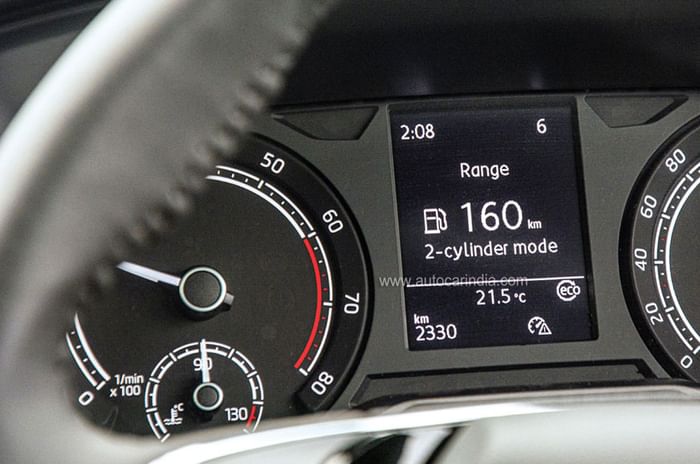
Transmission duties in the automatic are carried out by a 7-speed dual-clutch unit, the newest iteration of the DQ200 family; its predecessor served in the outgoing Polo 1.2 GT TSI and the Skoda Octavia 1.8 TSI. This automatic feels very smooth, and like before, the shifts are lighting quick; downshifts, however, aren’t nearly as quick in full-automatic mode. You will do well by tugging the left paddle a few times to downshift to the right gear when in a hurry. And it is when you take over manual control that you will truly appreciate the quickness with which this transmission performs, adding a greater degree of sportiness to the drive experience. What’s interesting is that both, the manual and automatic accelerate at an identical pace, taking an identical 9.5sec to sprint to 100kph, and going on to hit a top speed of around 190kph.
The 1.5 TSI DSG version is noisier than the 1.5 TSI manual at mid revs, and the engine boom inside the cabin keeps getting louder as the revs climb. Drive the 1.5 TSI and the 1.0 TSI versions back-to-back and this four-cylinder engine’s smoothness certainly impresses. While the 1.0 TSI isn’t what you’d term as gruff or unrefined by any stretch of the imagination, being a three-cylinder, it does emanate a typical thrum at higher revs.
The 1.0-litre, three-cylinder TSI manual version has tall gear ratios to aid fuel efficiency. Its broad spread of torque makes it easy-going while pottering around town, but you will need to work the gears and spin this engine to keep up with faster moving traffic. Hence, despite having six gears at its disposal, highway fuel efficiency is merely 14.3kpl, 2.5kpl better than its 11.8kpl city figure. The torque converter automatic is programmed to upshift early in the city, and you’ll often find yourself prodding the accelerator to get a move on. The constant on and off boost driving, along with heavy throttle inputs, result in a city fuel efficiency of 8.5kpl, and 12.4kpl on the highway.
The 1.5-litre four-cylinder TSI engine is equipped with active cylinder deactivation technology, which works extremely well in the background. It switches off two out of the four cylinders when the engine is under light load, in order to reduce fuel consumption. So seamless it is in its operation that unless you look at the ‘2-cylinder mode’ notification on the MID, you won’t even be aware of its existence. What’s impressive is that the moment you prod the throttle a bit harder, it’ll fire up all the four cylinders to provide the requisite energy to get moving. But does this technology really reduce fuel consumption?
The 1.5 TSI with this clever active cylinder deactivation technology is actually more fuel efficient than its three-cylinder counterpart. At most times, this engine is running on just two out of its four cylinders when driven sedately, and with crisp responses on offer, you’ll seldom need to accelerate aggressively to get going. Fuel efficiency figures for the manual, as a result, are impressive, which stand at 11.5kpl and 16.5kpl in the city and highway, respectively. Unlike the torque converter, the dual-clutch automatic doesn’t shift to higher ratios as quickly. However, you’ll often catch the automatic slipping the clutch when you get off and on the throttle in the city, so fuel efficiency takes a beating and it manages only 8.9kpl. Having seven ratios to play with, the DSG is an easy sipper on the highway and it returns a rather promising 15.4kpl.
One of the key talking points of this new MQB A0 IN architecture is that it is a whopping 30 percent more rigid compared to PQ25 platform that underpins the Polo, Vento and Rapid. The Kushaq’s chassis prowess is revealed at the first corner where the body control feels tight, the car feels nimble, and it wraps itself around the driver like a much smaller car. Yes, it sits 188mm above the ground (unladen), and it is quite tall too, so body roll is inevitable, compared to a sedan like the Rapid, but it is still well contained. And with wheels stretched to the farthest corners of the car, the Kushaq offers excellent grip around corners, and infuses ample confidence from behind the wheel. Speaking of which, the steering is light and fluid, and while its lightness will appeal to a majority of buyers, driving enthusiasts will be left wanting for a bit more heft, especially at highway speeds.
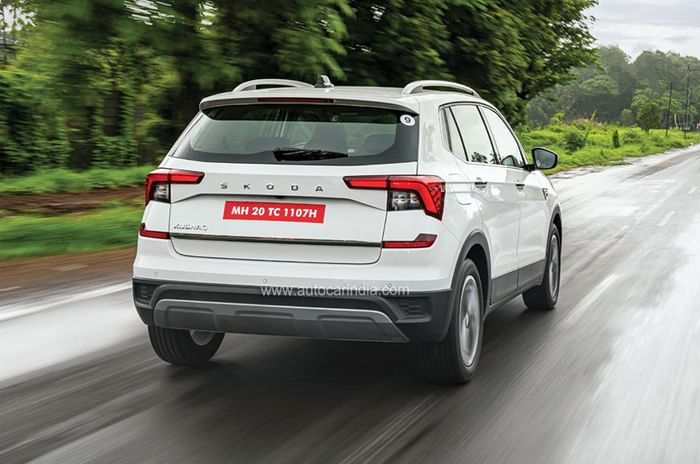
What’s also impressive is the Kushaq’s rock-solid stability while cruising at highway speeds, where it rides flat and composed at all times. Typical to European cars, the Kushaq is a bit stiff-kneed and the suspension tends to thud over sharp bumps. Due to the stiff suspension setup, its low-speed ride is a bit busy, and neither does it flatten road imperfections as competently as a Renault Duster or absorb road shocks as nicely as the Hyundai Creta.
Braking performance is an area where the Kushaq impresses. Despite missing rear disc brakes, in a panic braking scenario, it comes to a halt from 80kph in just 25.35m, a distance shorter than the rear disc brake-equipped Kia Seltos.
Skoda’s new 10-inch touchscreen is an easy-to-use system, with a dedicated shortcut bar to the left of the screen for easy access to the menus. What’s nice is that the touch sensitivity is good and it responds rather quickly. It features wireless Android Auto and Apple CarPlay, although on several occasions we noticed connectivity issues during calls. The higher variants are equipped with a 6-speaker sound system, along with a subwoofer. While the quality is acceptable, it doesn’t sound nearly as nice as the branded audio systems that its rivals feature. Users can also locate their vehicle, check engine status and service schedules, among other things, via a mobile application.
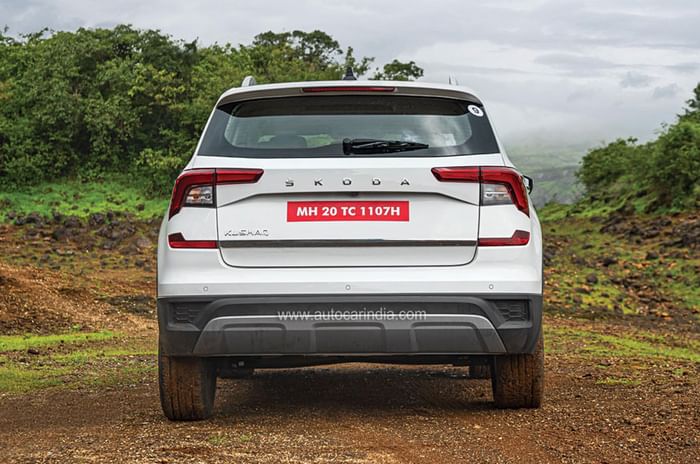
Throughout this review, you must have noticed multiple instances of us nitpicking over tiny details. The reason for this is that, in certain areas, the Kushaq doesn’t quite meet the high standards of quality and attention-to-detail that Skodas are known for. View it in the light of the competition and the Kushaq’s compact dimensions and premium pricing go against it, as do a missing diesel engine option and the lack of features like a panoramic sunroof and a 360-degree camera. But what Skoda offers is a chic crossover with a solid, European build and strong fundamentals. With brilliant dynamics and a potent 1.5 TSI engine, the Kushaq is easily one of the best driving cars in its class, and that’s where its appeal lies. Skoda has done well by offering petrol engine and transmission combinations that cover a wide price band, out of which the 1.5 TSI stands out due to its strong performance and impressive fuel efficiency. Skoda must also be lauded for equipping all variants with active safety kit like ESP, traction control and multi-collision braking, with some higher variants also getting six airbags and hill-launch assist. In conclusion, there’s finally a credible alternative to the formidable Koreans, and while it may not have all it takes to rule the roost, the Skoda Kushaq certainly has the potential to grab a sizeable share of the midsize SUV pie.












